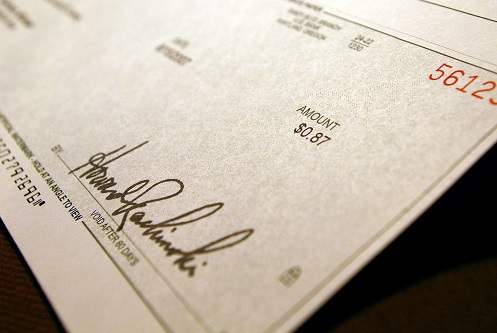I receive compensation for content and many links on this blog. Be aware that websites may earn compensation when a customer clicks on a link, when an application is approved, or when an account is opened. Citibank is an advertising partner of this site, as is American Express, Chase, and Capital One. Any opinions expressed in this post are my own, and have not been reviewed, approved, or endorsed by my advertising partners. I do not write about all credit cards that are available -- instead focusing on miles, points, and cash back (and currencies that can be converted into the same). Terms apply to the offers and benefits listed on this page.
Plastiq.com is a service that will charge your credit card and mail checks on your behalf. (With some vendors they also make electronic ACH payments.)
Their usual fee for this is 2.5%. It’s worth it to incur that fee if you’re earning a signup bonus with the credit card charges, or you’re meeting a spending threshold for a bonus. For instance I work to spend $40,000 on my premium American Airlines card (10,000 elite qualfying miles) and $50,000 on my AAdvantage® Aviator® Silver World Elite Mastercard® (10,000 elite qualifying miles; 6000 qualifying dollars; companion ticket).

However I generally advise that it’s not worth it for the ongoing miles without a spending bonus. At various times some Chase products have coded Plastiq.com payments as 3 points per dollar for instance.
You don’t want to incur a 2.5% fee to earn 1 mile, you’re buying that mile at 2.5 cents. No mile is worth that.
This may be totally obvious but it struck me when I was having a conversation with an award booking client, I told him that it wasn’t worth a 2% fee or higher to generate spending and he replied “but it’s business spending, so I write off the fee.” Of course that’s right. If you’re paying business bills via Plastiq.com your net cost is 2.5% minus (2.5% * your marginal tax rate).

A sole proprietorship in the top tax bracket paying tax at the top marginal rate (and not qualifying under recent tax reform for the lower corporate rate on pass throughs) will pay a net rate around 40% in federal taxes. To that person the ‘cost’ of Plastiq is about 1.5 cents per dollar, something that can be easily worth it with a well-crafted card strategy.
For instance pair a Chase Freedom Unlimited card with a Chase Sapphire Preferred Card or a Chase Sapphire Reserve and you’ll earn 1.5 points per dollar, transfer them to Sapphire Preferred or Reserve and the points become worth 1.9 cents apiece transferrable to miles. You’re earning a 2.85% rate of return at a cost of 1.5%, or netting 1.35 cents for every dollar you charge via Plastiq. That’s because the net fee is a lot lower when the fee is written off as a business expense.


I would usually pay our tax bills via credit card for the bonuses, waiting until the first of the year. Right now I’ve got a huge bill to pay come April and I’m trying to decide which card(s) to put it on. The BA companion pass? maybe one on mine, one on his Ba card? I could pay with SW to get the SW companion pass and the 110k points but most of the places I want to see are in Europe. Any ideas? Is there any card you could earn status via spend?
It’s more appropriate to say that someone at a 40% marginal tax rate is actually paying 4.17% on the plastiq purchase, not that someone with a business is somehow paying less than 2.5%. The business is still paying 2.5%, and it doesn’t see a benefit from the tax deduction since it has already presumably deducted the expense that is getting charged to plastiq. The only unrealized advantage here would be to have the business pay for a personal expense, which if you wish to play chicken with the IRS, you are probably already taking advantage of, and therefore will see no additional benefit.
Plastic still charges 2.5%. The business isn’t getting any special discount here.
Yeah I don’t think you get a second deduction… It’s accounted for in the expense write off.
Back when I was running distribution of marketing materials for a very, very large fast-food chain, we had a lot of franchisees who’d buy their materials using their personal miles cards (this was the late 90s, so before the diversity we have today).
Let me tell you, some of these guys were racking up 200k miles a year, which back then was a hell of a thing.
Restil – I believe you are not understanding quite right.
With a business, using Plastiq and paying a fee reduces your net income for the year by the amount of the fees, therefore resulting in lower net taxes. That is where the discount comes from. The business does still pay 2.5%, but saves 40% (depending on tax bracket) of the fee, resulting in a net cost of 1.5%.
For instance, say your net profit for the year is $1000. If 40% bracket, you would pay $400 in taxes, resulting in $600 in your pocket for the year. If you pay expenses using Plastiq and incur $100 in fees, your net profit for the year would be $900. 40% of $900 means $360 in taxes, resulting in $540 in your pocket for the year. If the points earned by paying with Plastiq are worth more than $60 to you, then it makes sense to pay with Plastiq.
Restil, help me out.
Say a fee is 2.5% on a 10K cost; $250. I then write off the fee as a business expense, and I’m at 35% marginal tax. In an LLC with pass through, the $250 is a business expense in EBITDA. So instead of $250 after tax, I am spending $250 before tax. How does that translate to a *higher* expense?
Sweet you are totally right!
What about time value of money?
Isn’t this off slightly:
“For instance, say your net profit for the year is $1000. If 40% bracket, you would pay $400 in taxes, resulting in $600 in your pocket for the year. If you pay expenses using Plastiq and incur $100 in fees, your net profit for the year would be $900. 40% of $900 means $360 in taxes, resulting in $540 in your pocket for the year. If the points earned by paying with Plastiq are worth more than $60 to you, then it makes sense to pay with Plastiq.”
In the “world without Plastiq,” you have $1000 profit and pay taxes on it, resulting in $600 in your pocket.
In the “world with Plastiq,” you incur (let’s say) $100 in fees. So you have $900 profit. But isn’t the point that the $100 is deductible, so your taxable income is only $800? In this case, you pay $320 in taxes, so you net $900 – $320 = $580. In other words, if the points are worth more than $20 ($600 – $580) then it makes sense to pay with Plastiq?
An issue with Plastiq that needs to be taken into account is the additional operational process of them cutting a paper check for those organizations that they don’t have ACH relationships with.
The qualitative valuation of this additional step is subjective yet wholly important, especially for sensitive and timely business payments.
Hi Gary, great article! This is exactly what I did – met the MQD waiver amount on my Chase United card and wrote off the fees.
LTL – The $900 in profit is already deducting the $100 in fees (you can’t deduct it twice). The fee is a business deduction that reduces your net profit, therefore reducing your taxes. Taxable income is $900.
Attn: Small Business Owners… IRS agents are too inconsistent and unpredictable to know how they would treat this type of transaction. For $500 of points (on about $20,000 of transactions), nobody should care… someone is paying tax on $500 of income. But if the volume is large enough, say $50K or maybe $100K,, and the travel is not business related, you may spend more to explain the transaction than you made from the points, and you may still lose your argument. Try not to take this strategy to extremes.
How can a tax agency have a problem with a business paying a legit expense with plastiq?
no matter what the business’s income?
Since when will they question your expenses, if genuine?
Isn’t it a wash once you subtract the value of the points earned from the amount spent?
I think leef33 misunderstood because he mentioned writing off travel and this has nothing to do with travel.
I do this all the time. I buy when the cost is under 2%. So that means Federal Income Taxes which are 1.87%, and business expenses. These have become not as beneficial starting with 2018 taxes, where 20% of pass through income isn’t taxed. So my net cost went from about 1.75% to 1.92% on business expenses. Still under 2%, so worth it to me as long as I use a card with bonus spend and continue to redeem only at 2.5%+. My goal isn’t free travel (although I get that too from regular spend), but “half price” travel, so half price on hotels and $2000 international business class instead of $4000+.